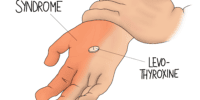Why Post-Surgery Pain Management Is Essential for Recovery

Post-surgery pain management plays a crucial role in the recovery process. It is widely recognized that effective pain control not only enhances patient comfort but also promotes better outcomes.
This article aims to explore the significance of adequate pain management after surgery, considering the impact of post-surgery pain and the challenges associated with its management. By examining strategies, medications, and alternative approaches, this article seeks to provide insights into minimizing pain and discomfort, ultimately highlighting the long-term benefits of proper pain relief for postoperative patients.
Key Takeaways
- Effective pain management enhances patient comfort and promotes better outcomes.
- Uncontrolled pain can lead to psychological distress, anxiety, and depression.
- Regular pain level assessments and adjustments to the management plan are essential.
- Adequate pain management promotes faster healing and minimizes complications.
The Importance of Effective Pain Management
Effective pain management is crucial for optimizing patient outcomes and promoting a successful recovery after surgery. Post-surgery pain can have significant physical and psychological effects on patients. Therefore, it is essential to implement appropriate pain relief methods to alleviate the discomfort experienced by patients.
There are various pain relief methods available, including pharmacological interventions such as analgesics and non-pharmacological approaches like physical therapy and complementary therapies. These methods not only help in reducing pain but also contribute to better postoperative outcomes.
In addition to the physical effects, uncontrolled pain can also lead to psychological distress, anxiety, and depression in patients. By effectively managing pain, healthcare professionals can minimize the psychological burden associated with surgery, improve patient comfort, and facilitate a smoother recovery process.
Understanding the Impact of Post-Surgery Pain
Understanding the consequences of inadequate pain control after surgical procedures is crucial for patient well-being and optimal outcomes. Post-surgery pain can have significant psychological effects on patients, including increased anxiety, depression, and impaired quality of life.
The intensity and duration of pain experienced by patients can vary depending on the type and complexity of the surgical procedure. Healthcare providers play a key role in managing post-surgery pain by implementing effective pain management strategies. These strategies may include the use of pharmacological interventions, such as analgesic medications, as well as non-pharmacological approaches, such as physical therapy and psychological support.
It is essential for healthcare providers to assess and monitor patients’ pain levels regularly and adjust the pain management plan accordingly. By addressing post-surgery pain promptly and effectively, healthcare providers can help improve patients’ psychological well-being and overall recovery.
Common Challenges in Managing Pain After Surgery
Common challenges in the management of pain after surgical procedures include variability in patients’ pain thresholds, limited access to specialized pain management resources, and the potential for medication side effects. These challenges can significantly impact the recovery process of patients post-surgery.
Managing pain effectively is crucial for ensuring optimal recovery outcomes. Healthcare providers play a vital role in addressing these challenges and promoting successful pain management. They need to accurately assess patients’ pain levels and develop individualized treatment plans that consider patients’ unique pain thresholds.
Additionally, healthcare providers should have access to specialized pain management resources and the necessary knowledge and skills to address any potential medication side effects. By actively engaging in the management of post-surgery pain, healthcare providers can contribute to improving patients’ recovery experiences and overall outcomes.
Strategies for Minimizing Pain and Discomfort
Strategies for minimizing pain and discomfort following surgical procedures involve the utilization of non-pharmacological interventions, such as relaxation techniques and physical therapy, in combination with appropriate pharmacological approaches tailored to individual patient needs.
Patients can benefit from a holistic pain management approach that addresses not only the physical aspects of pain but also considers the emotional and psychological well-being.
Non-pharmacological techniques, such as deep breathing exercises, guided imagery, and mindfulness meditation, can help reduce anxiety and promote relaxation.
Physical therapy interventions, including exercises and stretches, can aid in improving mobility and reducing postoperative pain.
Additionally, complementary therapies like acupuncture and massage can provide relief and enhance overall well-being.
Medications and Treatments for Post-Surgery Pain
Analgesic medications, such as opioids and nonsteroidal anti-inflammatory drugs (NSAIDs), are commonly used in the treatment of postoperative pain due to their ability to alleviate discomfort and improve patient outcomes.
However, there is growing concern over the potential side effects and risks associated with these medications, leading to the exploration of medication alternatives and non-pharmacological therapies.
Medication alternatives may include the use of adjuvant analgesics, such as antidepressants or anticonvulsants, which can enhance pain relief without the addictive properties of opioids.
Non-pharmacological therapies, such as acupuncture, massage, or physical therapy, have also been shown to provide effective pain relief and improve patient satisfaction.
These approaches can be used alone or in combination with analgesic medications to provide a multimodal approach to postoperative pain management, promoting a more comprehensive and personalized treatment plan.
Alternative Approaches to Pain Management
Acupuncture, massage, and physical therapy are alternative approaches to pain management that have been shown to effectively alleviate discomfort and improve patient satisfaction. These holistic approaches offer non-pharmacological methods for pain relief, promoting a more comprehensive and integrative approach to healthcare.
- Acupuncture:
- Involves the insertion of thin needles into specific points on the body to stimulate the flow of energy and promote pain relief.
- Works by activating the body’s natural painkilling mechanisms and reducing inflammation.
- Can be used alone or in combination with other treatments to address various types of pain.
- Massage:
- Involves the manipulation of soft tissues to promote relaxation, improve blood circulation, and relieve muscle tension.
- Helps to release endorphins, the body’s natural painkillers, and reduce stress and anxiety.
- Can be customized to target specific areas of pain or discomfort.
- Physical Therapy:
- Utilizes exercises, stretches, and manual techniques to improve strength, flexibility, and mobility.
- Helps to restore function, reduce pain, and prevent future injuries.
- May include modalities such as heat, cold, ultrasound, or electrical stimulation to further alleviate pain.
These alternative approaches to pain management provide patients with additional options that complement traditional pharmacological methods, allowing for a more individualized and holistic approach to pain relief.
Long-Term Benefits of Proper Pain Relief After Surgery
The use of proper pain relief after surgery has been shown to have long-term benefits such as faster healing and minimizing complications.
Research has consistently demonstrated that adequate pain management promotes a more efficient healing process, allowing patients to recover more quickly and resume their daily activities.
Additionally, effective pain relief measures can help reduce the risk of post-surgical complications, such as infection or blood clots, by ensuring the patient’s comfort and facilitating their ability to participate in necessary post-operative activities.
Faster Healing With Pain Relief
Faster healing can be achieved through effective pain relief after surgery. Pain management plays a crucial role in promoting faster recovery and reducing discomfort for patients.
Here are three key reasons why pain relief is essential for faster healing:
- Minimizes stress response: Post-surgery pain can trigger a stress response in the body, leading to increased heart rate, blood pressure, and potentially delaying the healing process. By effectively managing pain, this stress response can be minimized, allowing the body to focus on healing.
- Promotes mobility: Pain can limit a patient’s ability to move and engage in physical therapy, which is vital for a speedy recovery. By reducing pain, patients are more likely to participate in rehabilitation exercises, leading to improved mobility and a faster return to normal activities.
- Enhances sleep and mood: Pain can disrupt sleep and negatively impact mood, making the recovery process more challenging. By providing adequate pain relief, patients can experience better sleep quality and improved mood, which are essential for overall well-being and a faster healing process.
Minimizing Complications Through Relief
Minimizing complications can be achieved through effective relief methods that address the physiological and psychological impact of pain after a surgical procedure.
Post-surgery pain management plays a crucial role in preventing complications and promoting healing. Proper pain relief not only improves patient comfort but also enables them to engage in early mobilization and rehabilitation, which aids in reducing the risk of complications such as deep vein thrombosis and pneumonia.
Additionally, effective pain relief can prevent the development of chronic pain, which can have long-lasting physiological and psychological effects on patients. By adequately addressing pain, healthcare professionals can optimize patient outcomes and overall satisfaction.
Furthermore, promoting healing through pain relief ensures that patients can actively participate in their recovery process, leading to improved overall surgical outcomes.
Frequently Asked Questions
How Long Does Post-Surgery Pain Typically Last?
The duration of post-surgery pain varies depending on factors such as the type of surgery and individual differences. Effective pain management techniques, including medication, physical therapy, and psychological support, are crucial in facilitating the recovery time.
What Are Some Non-Pharmacological Options for Managing Post-Surgery Pain?
Mind-body techniques, such as relaxation exercises and guided imagery, can be effective non-pharmacological options for managing post-surgery pain. Physical therapy, including exercises and manipulative techniques, may also help alleviate pain and promote recovery.
Are There Any Risks or Side Effects Associated With Post-Surgery Pain Medications?
The use of pain medications in post-surgery pain management carries potential risks and side effects. It is crucial for healthcare professionals to communicate these risks effectively to patients and provide appropriate lifestyle recommendations to minimize potential adverse effects.
How Can I Communicate My Pain Levels Effectively to My Healthcare Provider?
Effective communication is crucial for accurate pain assessment. Patients should be encouraged to use standardized pain scales and describe their pain using specific descriptors such as intensity, location, and quality to facilitate clear understanding and appropriate pain management.
Are There Any Specific Dietary or Lifestyle Recommendations That Can Help Alleviate Post-Surgery Pain?
Dietary interventions and lifestyle modifications may help alleviate post-surgery pain. These recommendations may include consuming anti-inflammatory foods, such as fruits and vegetables, and avoiding foods that may increase inflammation, such as processed foods and sugar.









